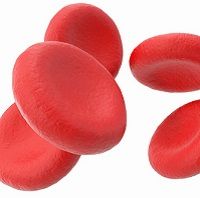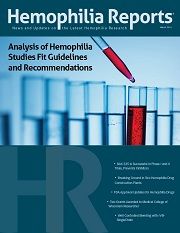Analysis of Hemophilia Studies Fit Guidelines and Recommendations
An analysis of randomized controlled trials (RCTs) published by the Institute for Quality and Efficiency in Health Care (IQWiG) determined that prophylactic treatment for hemophilia A is superior to on demand treatment in some outcomes.

An analysis of randomized controlled trials (RCTs) published by the Institute for Quality and Efficiency in Health Care (IQWiG) determined that prophylactic treatment for hemophilia A is superior to on-demand treatment in some outcomes.
Researchers from the German Federal Ministry of Health identified 13 completed and three ongoing long term RCTs to help answer their three main research questions. IQWiG wanted to map the available evidence for long term, factor concentrate based treatments of patients with severe hemophilia A and B with respect to different treatment strategies, factor concentrates, dosing regiments, and prophylactic treatment regimens. The investigators wanted to compare the long term benefit of prophylactic and on demand treatments to the patient relevant outcomes in controlled prospective analyses. And thirdly, the investigators wanted to examine to what extent the current guidelines and treatments are based on the evidence.
Three hemophilia A studies were available for use to compare the benefit of prophylactic versus on demand factor concentrate based treatment (one done with adolescents and adults and two done with children). The data pointed to added benefits using prophylactic treatments for outcomes such as health status and pain, plus the success in severe bleeding outcomes. Looking specifically at children’s outcomes, there were no added benefits for either on demand or prophylactic strategies in relation to pain, joint function, or quality of life.
Only two of the studies included hemophilia B patients, the researchers said. The investigators were unable to draw any conclusions about prophylactic versus on demand factor concentrate based treatment for patients with hemophilia B.
The researchers wrote to German authorities on guidelines and treatment options and received 13 potentially relevant guidelines and four treatment algorithms. Only three turned out to be evidence based, the researchers found. However, most of the guidelines and algorithms did not contradict the findings from the benefit assessments. The researchers found that one of the guidelines recommended on demand treatment which was not supported by the evidence. Several recommendations that focused on preserving the functionality of joints were not supported by the available evidence, the researchers said, but only because there was no data available to be assessed from the studies.
“For the topics investigated on the basis of the identified studies on the treatment of hemophilia A and B, the degree of consistency between the underlying evidence in the guidelines and the corresponding evidence from the above studies was low, as the evidence base of the guidelines varied strongly or no evidence was provided,” the authors concluded. “Nevertheless, the guidelines and treatment algorithms do not generally contradict the results of the benefit assessment.”
